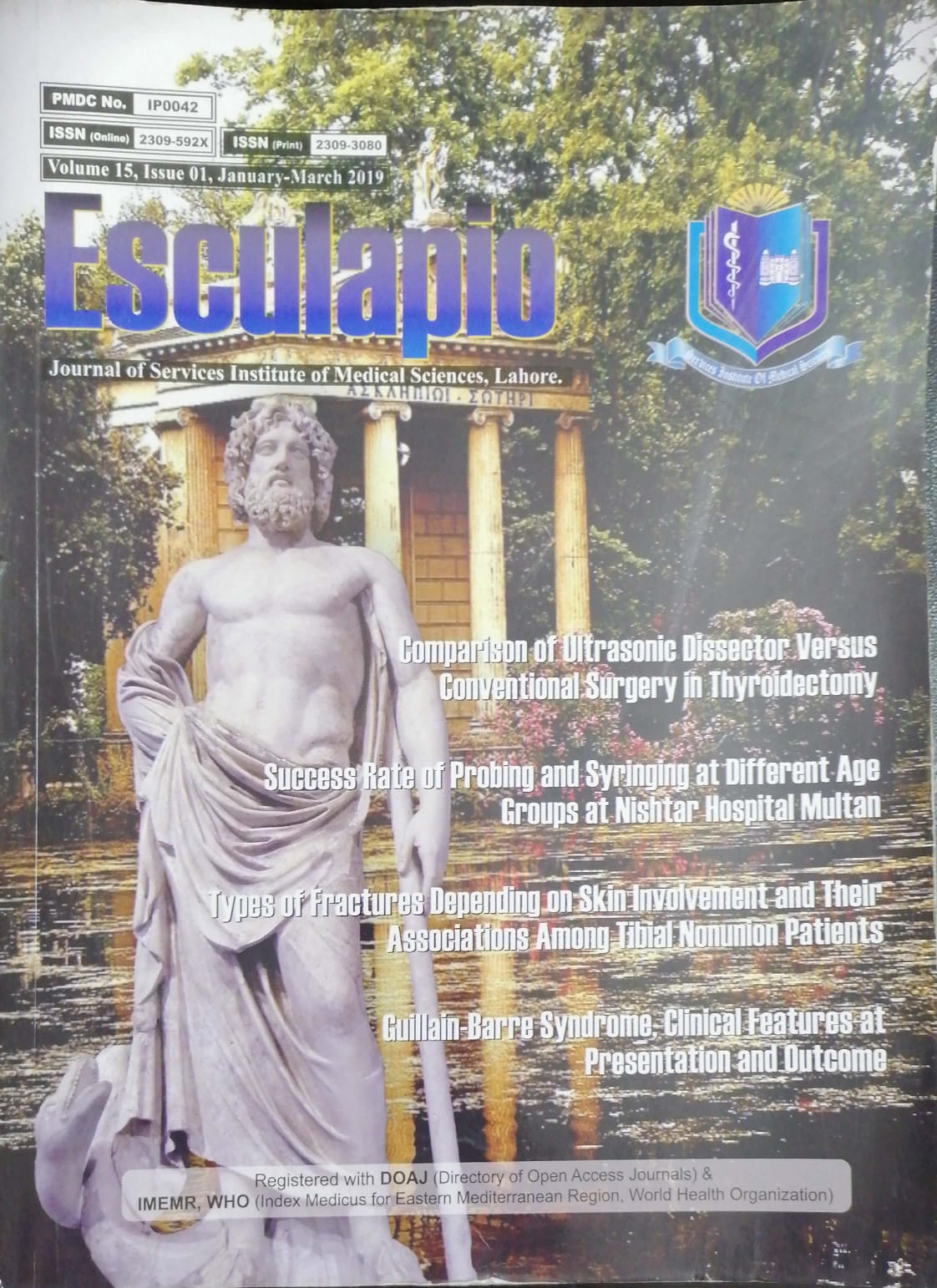Observation of Clinical Courseand Response to Conservative Management Inpatients with Hypertriglyceridemic Acute Pancreatitis Admitted to Medical Ward.
DOI:
https://doi.org/10.51273/esc19.71517Keywords:
hypertriglyceridemia, acute pancreatitis,, hypertriglyceridemic pancreatitis.Abstract
Objective: To study the characteristics and clinical course of hypertriglyceridemic acute
pancreatitis patients admitted under care of medical department and observed the effects of
conservative management on triglyceride levels.
Methods: Patients presenting with mild to moderate acute pancreatitis having admission
triglyceride levels more than 11.3mmol/l (1000 mg/dl), normal biliary anatomy and absent gall
stones were included. They were closely monitored clinically as well as with serial pancreatic
enzymes and triglyceride levels. Initially, the patients were started on conservative regimen
including NPO, IV fluids, insulin infusion and anti-lipid medications. Plasmapheresis considered
as a non-conservative intervention was not done immediately on admission, but was reserved for
the cases showing lack of improvement, worsening of symptoms or lack of reduction in
triglyceride levels within 24 to 48 hours of starting treatment.
Results: Twelve patients over the period of five years were studied, including nine males and
three females. Diabetes turned out to be main cause of hypertriglyceridemia (nine out of 12
patients were known diabetic, and two were newly diagnosed during this admission). Patients
with diabetes were found to be poorly compliant with their treatment and monitoring of blood
sugar levels. All patients were either overweight or obese, BMI ranged from 27.8-35.5 Kg/m2.
Four patients gave history of alcohol intake and two had hypothyroidism. Five patients were
known to be dyslipidemic but none of the patients were aware of any family history of
hyperlipidemia. Three patients needed plasmapheresis due to systemic complications and
persistent pain whereas, the remaining patients improved with conservative management only.
Triglyceride levels declined rapidly and steadily for almost all patients and average time of
discharge was approximately one week.
Conclusion: Rising obesity and diabetes can lead to increase in cases of hypertriglyceridemic
pancreatitis. Diagnosis can easily be missed if triglyceride levels are not checked on admission,
as levels can drop rapidly due to treatment started for acute pancreatitis. Patients should be
strongly emphasized for compliance to treatment of diabetes and hyperlipidemia and advised to
lose weight to prevent occurrence of these cases










